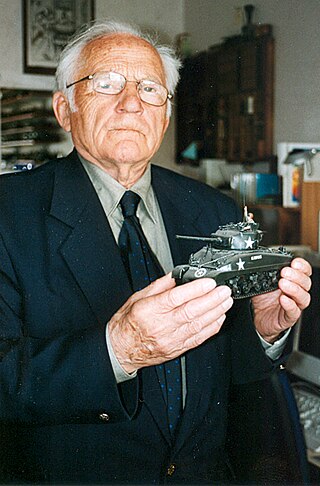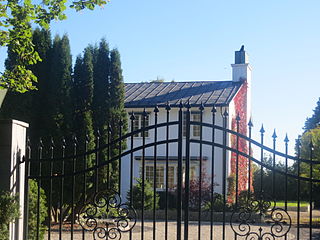Kielland is a Norwegian surname. Notable people with the surname include:

The Royal Norwegian Order of Saint Olav is a Norwegian order of chivalry instituted by King Oscar I on 21 August 1847. It is named after King Olav II, known to posterity as St. Olav.
The Norwegian order of precedence is the hierarchy of officials in the Government of Norway used to direct seating and ranking on formal occasions, decided by the King, which came into effect from 1 July 1993.

Sverre Bratland was a Norwegian military leader.
The Danish order of precedence is a symbolic hierarchy of Danish officials used to direct protocol. It has no official status and entails no special privileges, but has been established in practical use, e.g. determining seating arrangements at formal occasions in the royal house. The order of precedence is very elaborate, and especially the lower classes include many relatively obscure civil servant positions; the following is only an excerpt.
Richard Andvord was a Norwegian cavalry officer, diplomat and aide-de-camp for the Norwegian royal family.
Odd Grønvold was a Norwegian royal servant.

Else Werring, née Wilhelmsen was a Norwegian royal hostess.

Ingvald Marillus Emil Smith-Kielland was a Norwegian military officer, diplomat, sports official, and royal servant.
Ingvald Mareno Smith-Kielland was a Norwegian royal servant.
Magne Hagen is a retired Norwegian royal servant.
Kaare Langlete was a Norwegian military officer and royal servant.
Åge Bernhard Grutle is a Norwegian diplomat and royal servant.
Jacob Roll Knagenhjelm was the Lord Chamberlain of King Haakon VII of Norway from 1925 to 1931 and a member of the Norwegian nobility.

Peder Anker, Count of Wedel-Jarlsberg was a Norwegian courtier, military officer and estate owner. He served as Lord Chamberlain for King Haakon VII of Norway from 1931 to 1945 and was one of the King's closest confidants for over thirty years. In 1946 he succeeded his brother as head of the house of Wedel-Jarlsberg and feudal count (lensgreve), the highest rank of the Dano-Norwegian nobility and equivalent to Duke in other countries.
The King Haakon VII 1905–1955 Jubilee Medal, also known as the King's Jubilee Medal, is a Norwegian award instituted in November 1955 by Haakon VII of Norway in honor of the 50th anniversary of his accession to the throne. The medal ranks 32nd in the Norwegian decoration order of precedence.

Vice Admiral Count Gösta Carl Albert Ehrensvärd was a senior Swedish Navy officer. Ehrensvärd hailed from a distinguished naval lineage, being the son of Admiral Count Carl August Ehrensvärd. His family ties included notable figures such as his brother, General Carl August Ehrensvärd, and his great-grandfather, the renowned fortress builder Augustin Ehrensvärd. Following his naval education, Ehrensvärd embarked on a prolific career within the Swedish Navy, rising through the ranks from sub-lieutenant to vice admiral. He held various commanding roles, such as leading the Destroyer Division and serving as Chief of the Naval Staff. Additionally, Ehrensvärd contributed to naval education and literature, notably as a teacher and editor of naval journals. His tenure saw significant contributions to naval strategy and administration, culminating in his promotion to vice admiral before retiring from active service in 1950.

Admiral Stig (Hansson) H:son Ericson was a Swedish Navy naval officer. He was Commander-in-Chief of the Coastal Fleet from 1950 to 1953 and the Chief of the Navy from 1953 to 1961. After retiring from the Navy in 1961, Ericson held court offices in the Royal Court of Sweden. He was First Marshal of the Court from 1962 to 1973 and Marshal of the Realm from 1966 to 1976.

Vice Admiral Erik Viktor Philip Gustafsson af Klint was a Swedish Navy naval officer. af Klint's senior commands include postings as Chief of Staff of the Coastal Fleet, head of Section 2 of the Defence Staff, Commander-in-Chief of the Coastal Fleet and commanding officer of the Naval Command East.
The Marshal of the Court of Denmark is Chief Administrative Officer of the Royal Household of Denmark. The court marshal is the chief executive of finance, staff, official duties, etc. and heads the court marshal's office. This role traditionally fell to the Lord Marshal of the Court, but this title is no longer used, and all the responsibilities associated with the title have been allocated to the Marshal of the Court.








